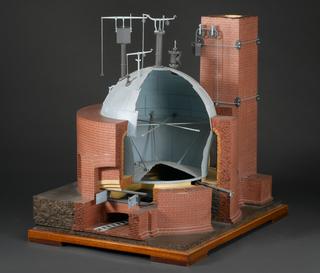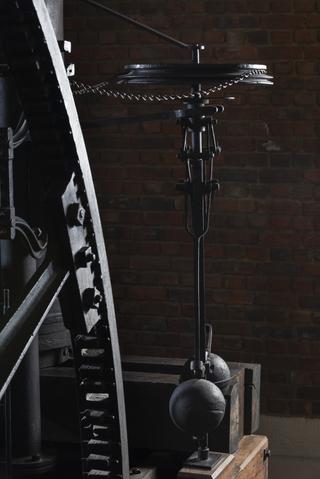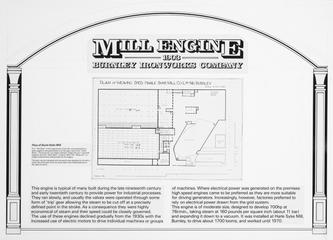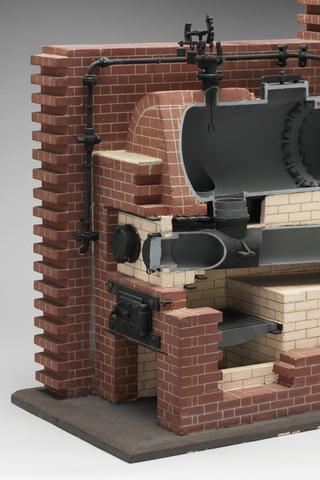
Two Clupet Piston Rings

One Clupet Piston Rings, patented by B. Clews and H.M. Peterson in 1919, viz: 1 for 5 1/2" diam. cyl. and 1 for 2 1/2" diam. cyl.
This, known as the "Clupet " ring, is of the Ramsbottom type, but has a double coil of uniform section, the two coils being united by a stepped bridge part and being made so as to press together tightly, as patented in 1919 by Messrs. B. Clews and H. M. Petersen. The method of construction is to turn a narrow helical groove in a tube of the required thickness and mill out first one side of the groove wider for one complete turn, and then the other side in the same way, so leaving a stepped bridge piece. By boring out the inside of the tube, the ring is set free. The bridge and ends are shaped to fit one another, when the ring is in the state shown by the smaller example. By springing each end in turn across the centre part the ring is completed as shown by the larger example. As the gap present in the ordinary piston ring is absent, it is claimed that there is no leakage, that full compression is obtained and that friction is greatly reduced because only one ring is needed in place of two or more. The examples are for 5.5 in. and 2.5 in. diam. cylinders respectively. The ring is made up to 24 in. diam.




